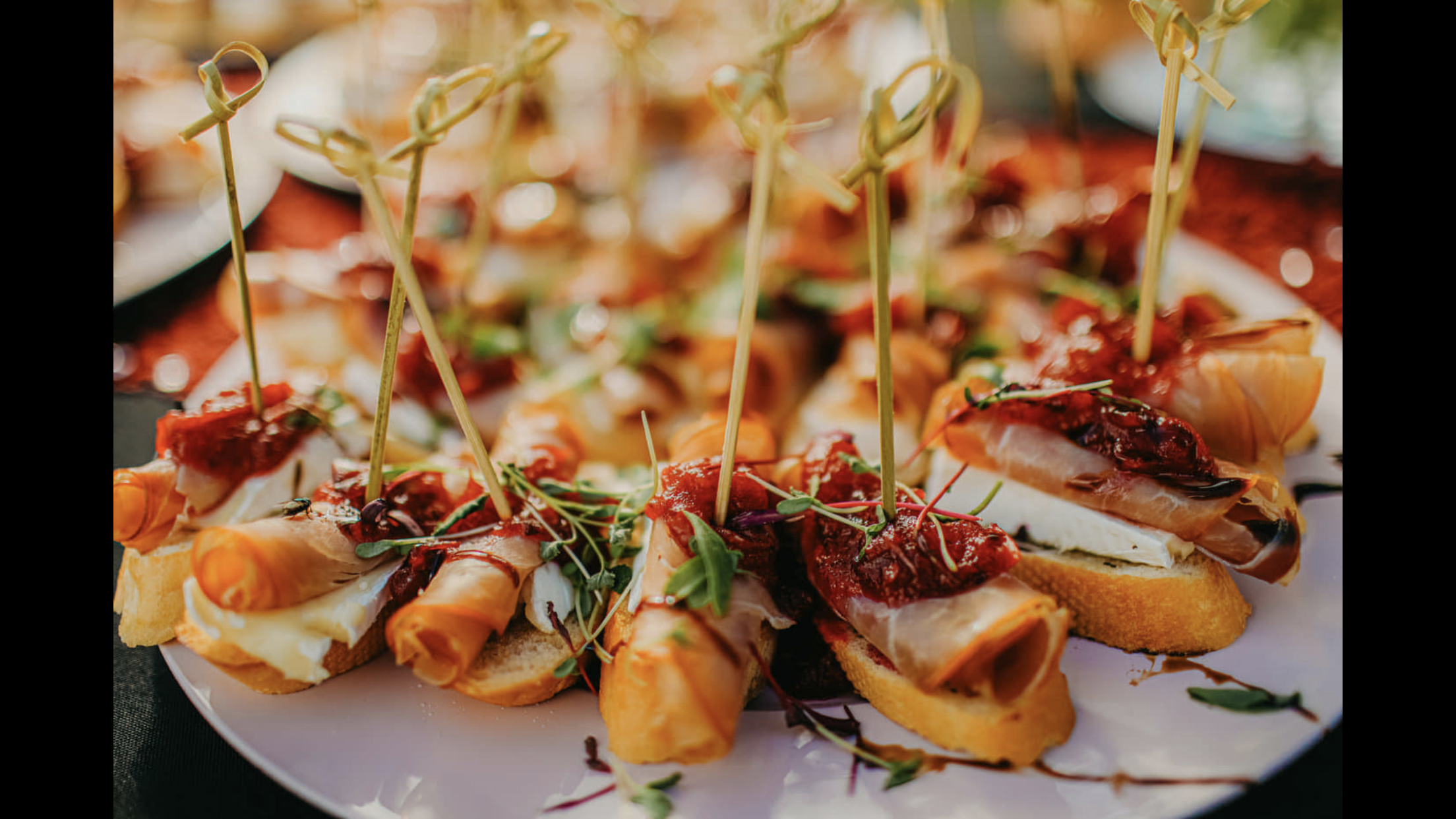


I thought I would share my Homemade Pie Crust recipe with you. I find when I’m talking to people about making pies, they all say they would rather buy the store-bought pie crust than to make it themselves. Now, there are some perfectly good ready-made pie crusts out there, but there is nothing better than making your own.
Listen, it’s not hard to make your own pie crust, and the best thing is, you can do it in advance. You can freeze them too!


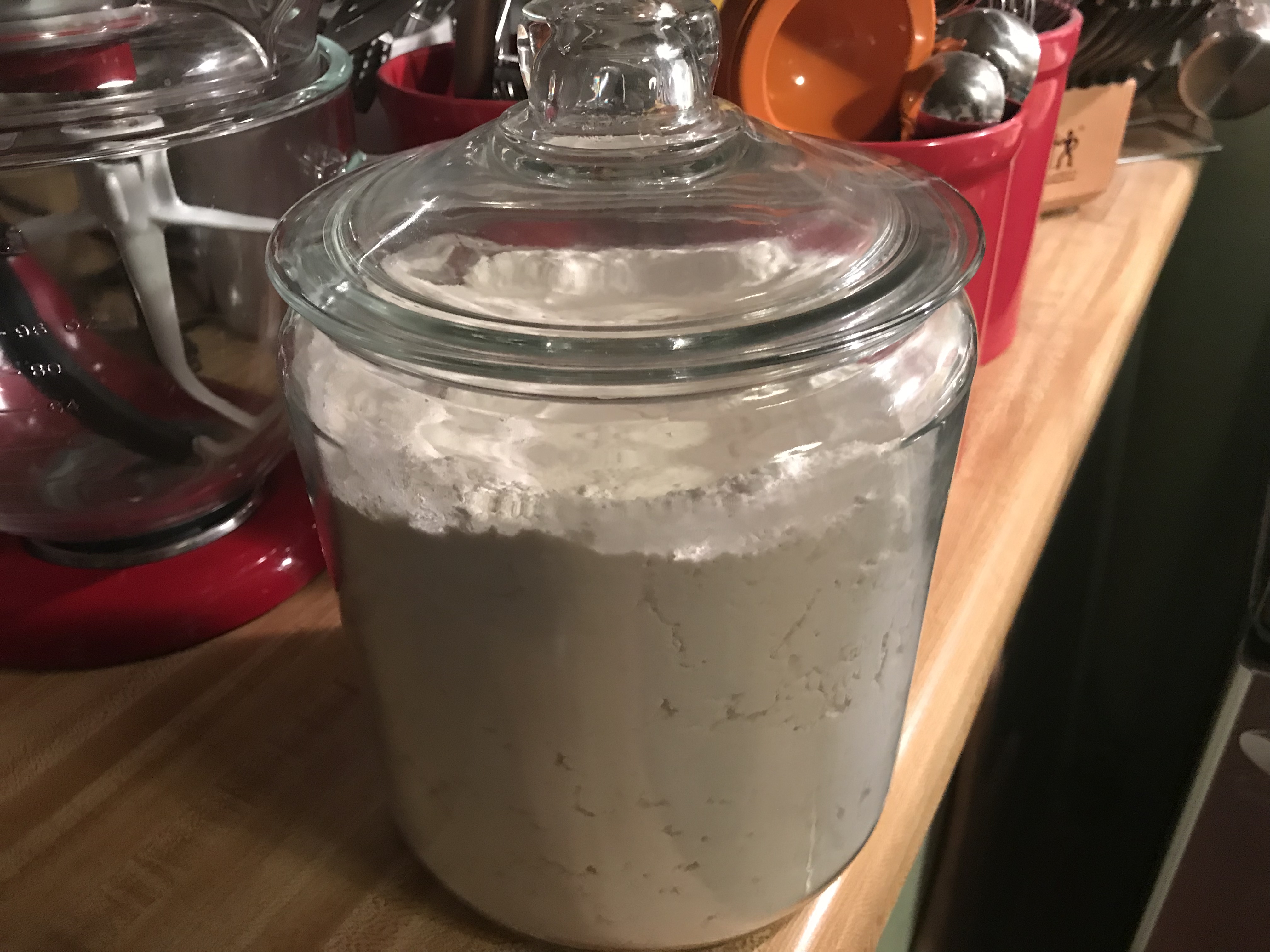
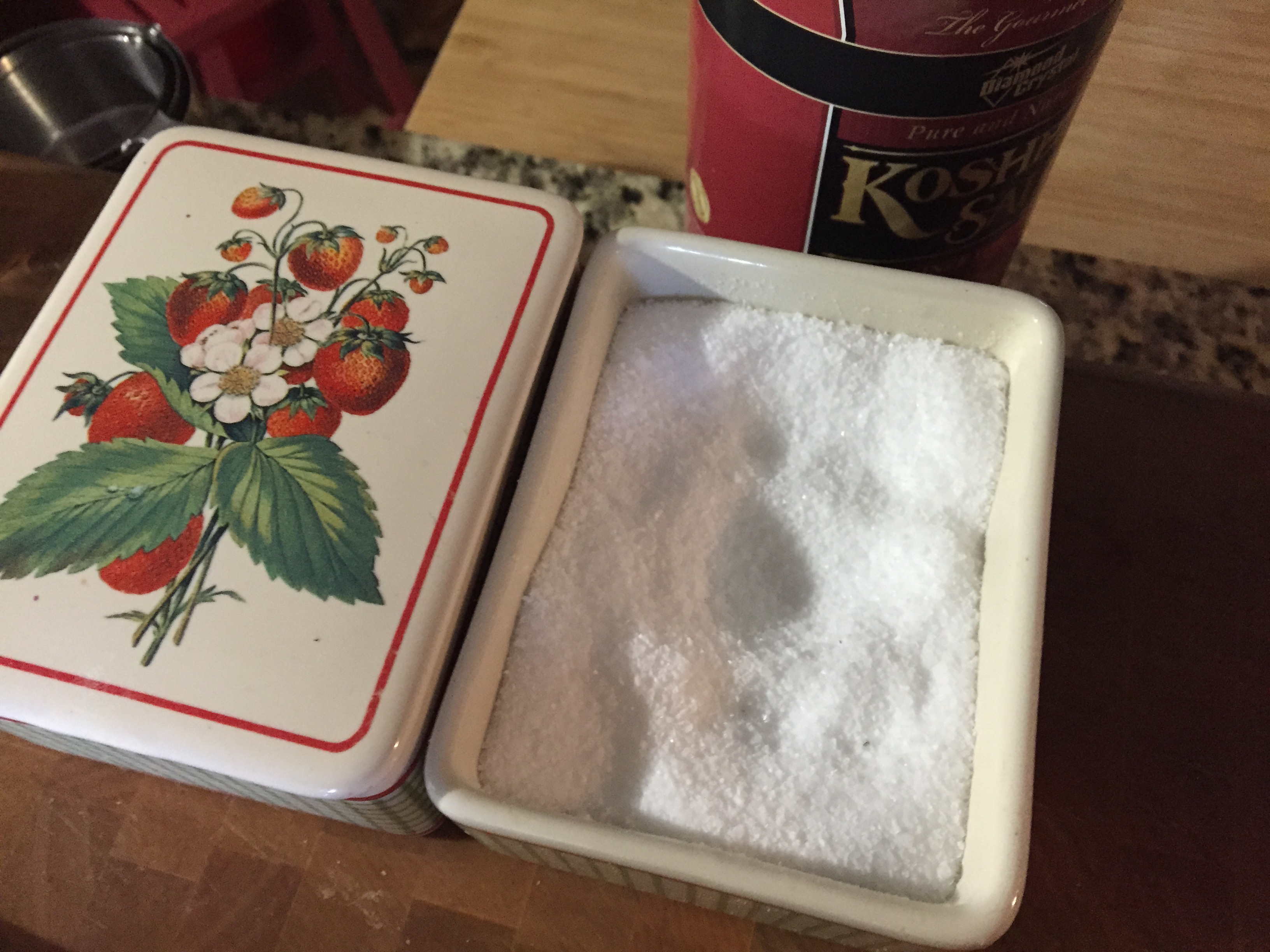




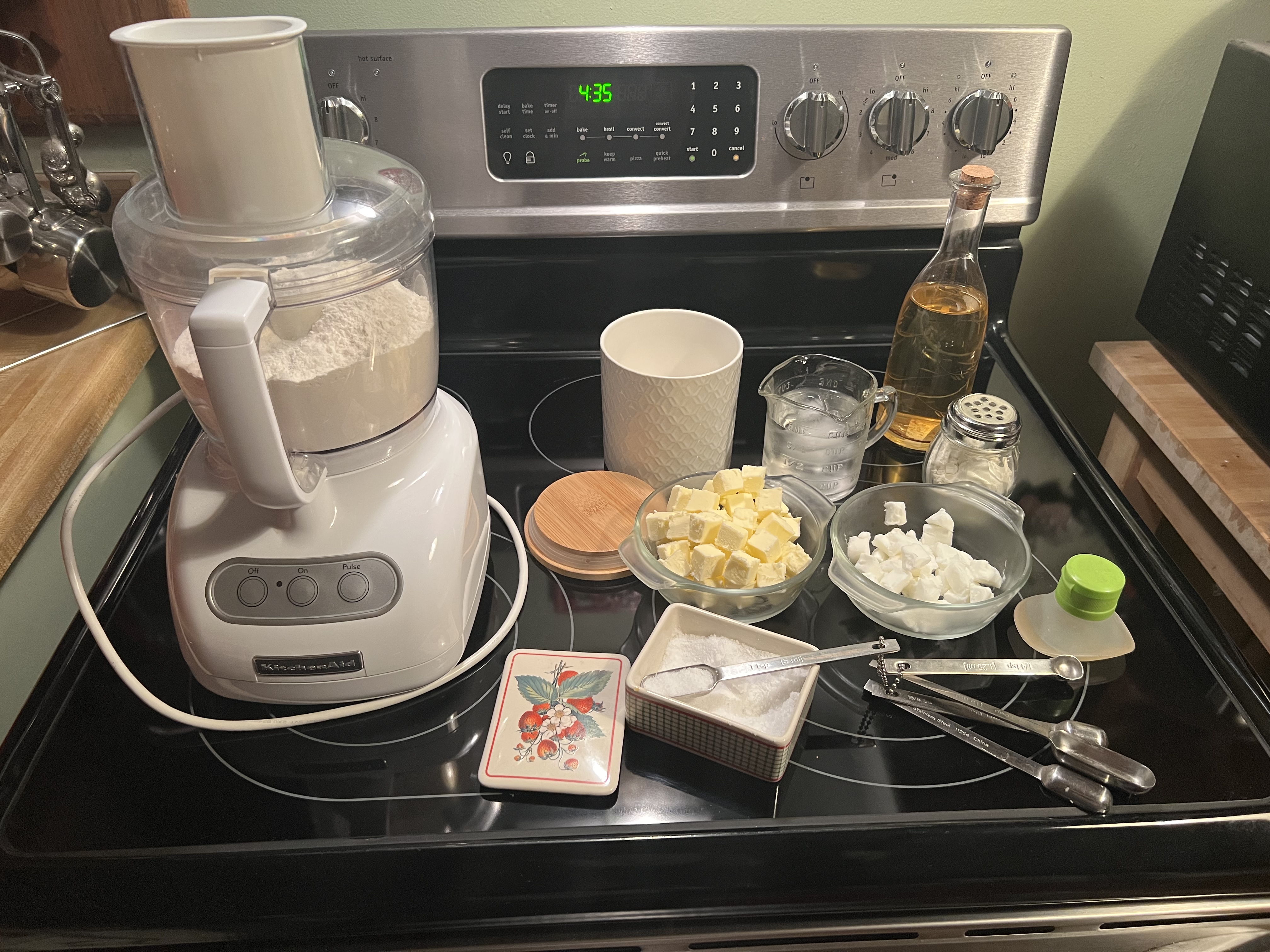














Below I’m showing the process if you’re using a top and bottom crust for a pie.
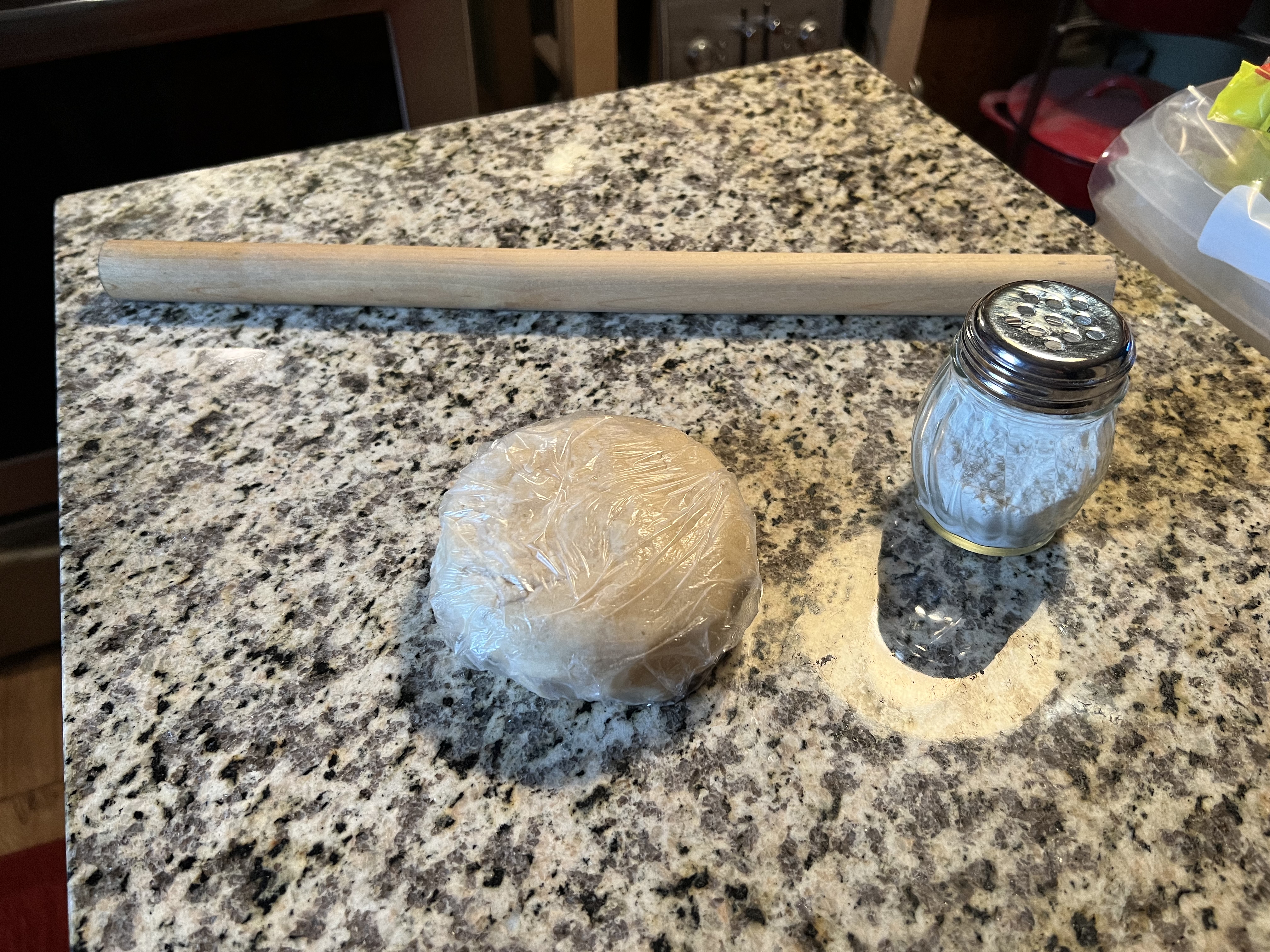






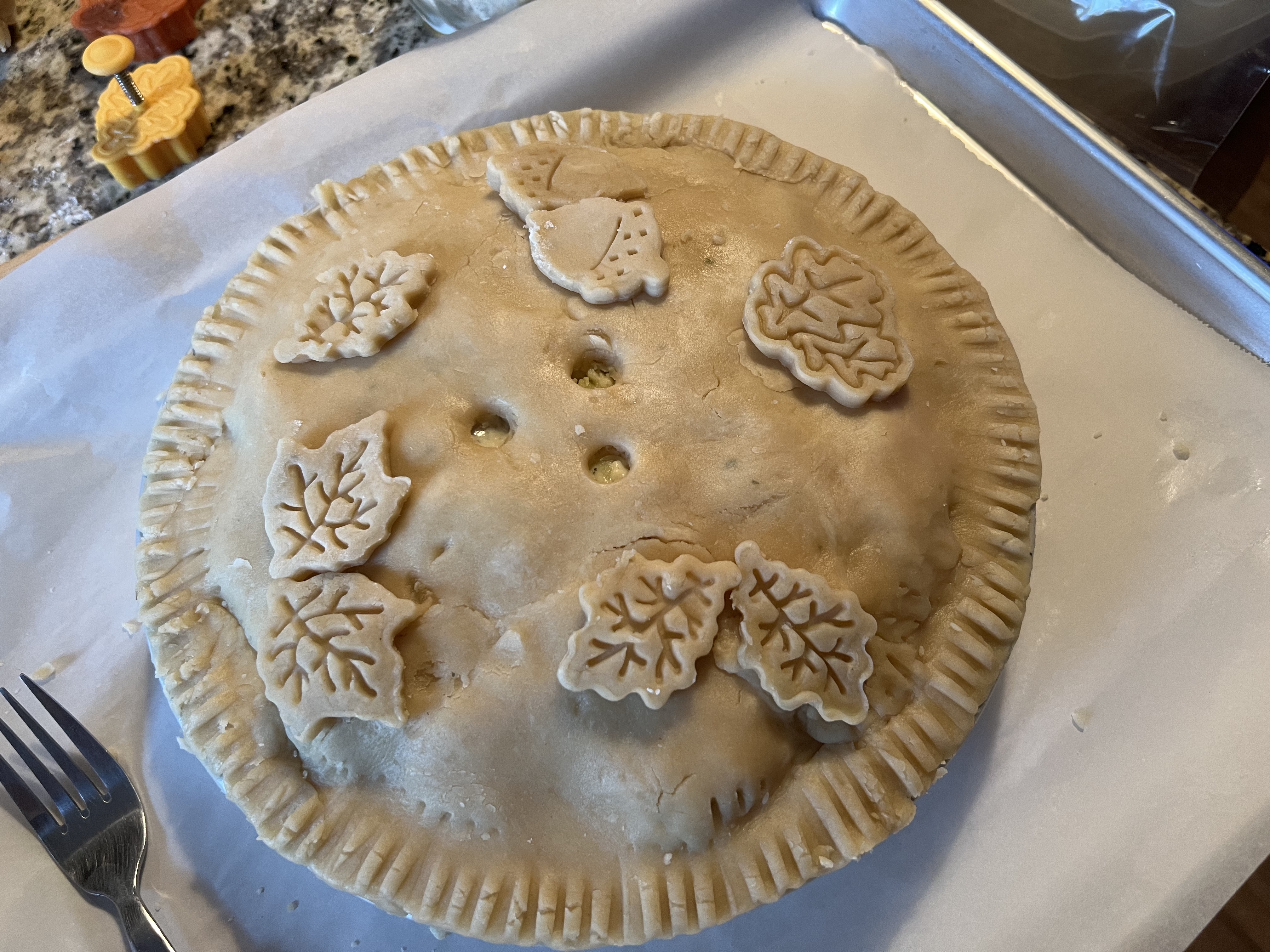


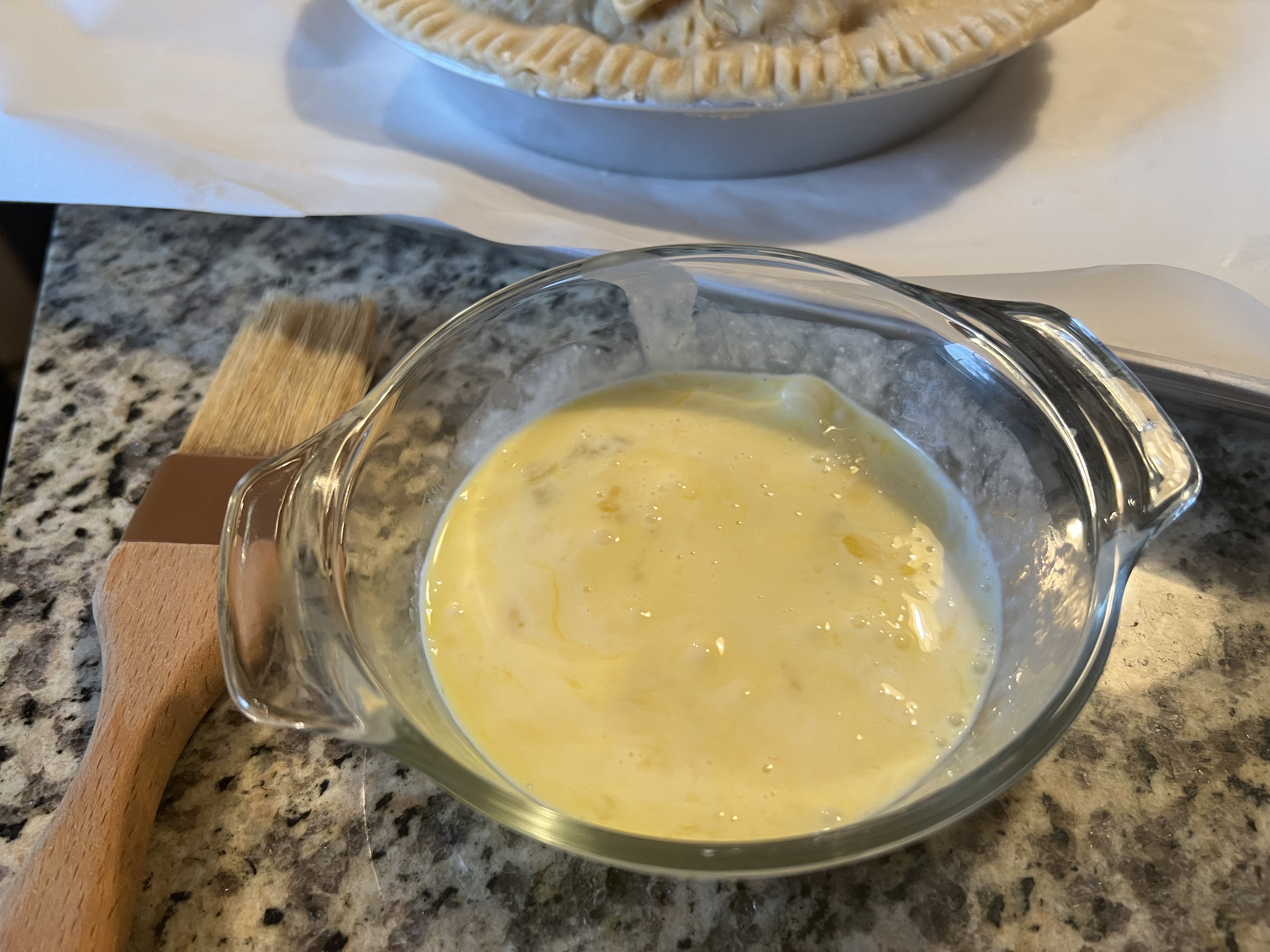


Below is a picture of a pie crust using only a bottom crust.

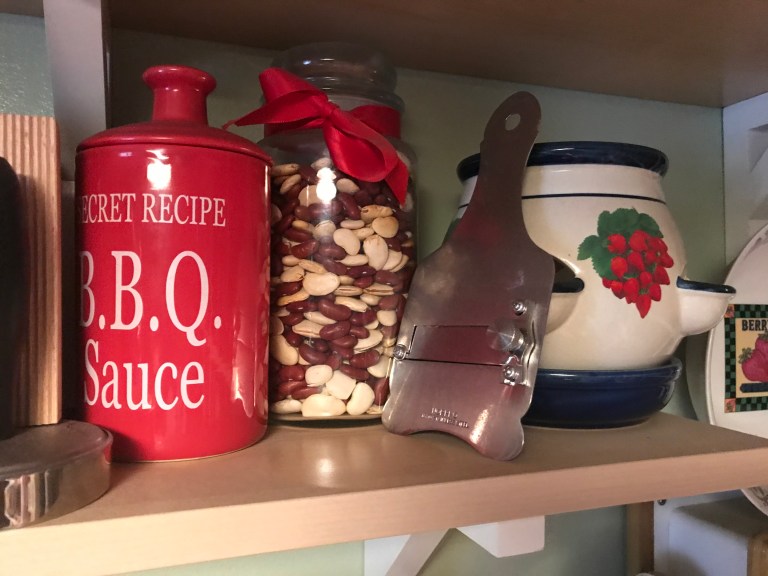
Above are my pie weights I use for *Blind Baking a pie crust. I store my pie weights (dried beans) in a jar. I can use them over and over again. Be sure to allow them cool completely before placing them back into the jar for the next time.
First step is to *dock the crust with a fork.

Below I’m using a silicone crust protector for my Famer Cheese Pie.
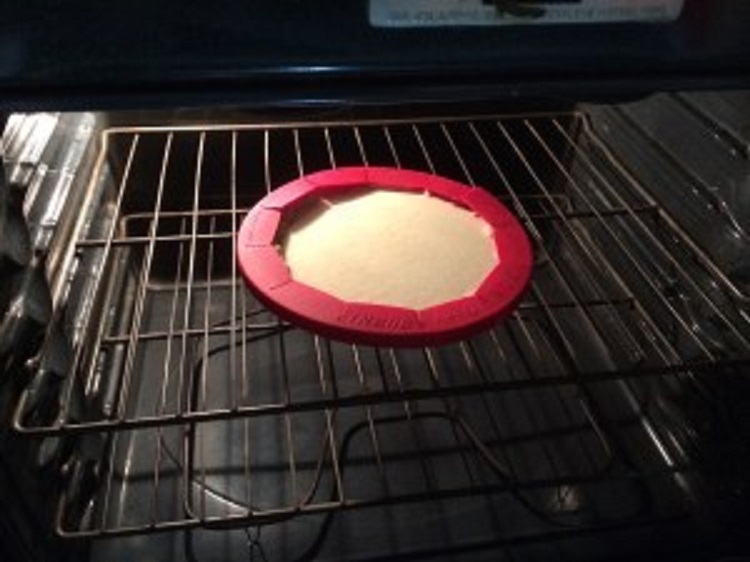
Prep Time: 15 minutes
Inactive Prep Time: 2 hours
Total Time: 2 hours 15 minutes
Yields: 2 (12-inch in diameter) dough rounds
Equipment: 1 (10-cup) food processor, 1 (9-inch) pie pan/plate, rolling pin, silicone crust protector or aluminum foil
Ingredients:
3 cups of all-purpose flour
1 1/2 sticks (12 tablespoons) of butter, cubed and cold
1/3 of a cup of vegetable shortening, cubed and cold
3 tablespoons of granulated sugar
1 teaspoon of Kosher salt.
2 teaspoons of apple cider vinegar, chilled
4 to 6 tablespoons of ice water
Note: If your pie dough breaks or crumbles when you try to roll it out, it’s probably too dry. Just sprinkle some cold water over the dough with you fingers and work it in-gently.
Directions:
Into the food processor add the flour, salt, and sugar and just pulse until all the ingredients are mixed through, a couple of times will do it.
Next, add in the diced shortening and butter. You want to pulse this until the flour looks like bits of pea-size butter and shortening pieces are running all through the flour. Pulse about 8 to 10 times.
After the flour looks like the picture above, place the lid back on, and with the machine running, through the feed tube at the top, add the apple cider vinegar first, then pour the ice water in slowly. Your only going to add enough water just until the dough comes together. Sometimes it will take anywhere between 4 to 6 tablespoons of the ice water.
Dump the dough out onto your floured board. Be careful to remove the blade first.
Working fairly quickly, use your hands, form the dough into a ball, then flatten into a rough disk-like shape. Using a bench scraper, divide the dough in half. Place one of the disks onto a piece of plastic wrap. Use the excess plastic to get rid of any cracks you might see in the outer edges of the disk of dough. You can do this by, using the plastic wrap so as not to tough the dough, moving you hands in a circular motion around the edge of the dough, forming 2 (5-inch) fissure-free (smooth with no cracks) disks. Wrap each 5-inch disk of dough in plastic wrap and place them into the frig for at least 2 hours before rolling.
Once you’ve done this one time, you’ll see how easy making your own pie crust is, and how good it tastes.
After you’ve made your dough, you want to wrap it well in plastic wrap. Allow the dough to rest in the frig for at least 2 hours an hour before placing the dough into a resealable bag. Make sure you let all the air out for longer shelf life.
Note: I like to date any dough I’ve frozen so if I have more than one I know they’ll be rotated. When your ready to use your dough, transfer to the frig the night before so it will be ready for you to use.
Really important, allow the dough to sit out on the couter for 10 minutes before rolling. This will prevent the dough from cracking when you start to roll.
On a well floured surface begin rolling out the dough. Using a rolling pin, apply even pressure and gently roll it from the center out, turning the dough about a quarter turn after a few rolls. Remember to flour your surface and the top of the dough as needed to prevent the dough from sticking.
You’ll want to roll your dough out into a “round” (circle) measuring 12 inches in diameter. Use a ruler to make sure. Roll the dough up around the rolling pin, then carefully move the pin over to the pie plate, and unroll. This is the perfect size for a 9-inch pie plate, so you have a little overhang and have enough dough to flute the edges. Cut off the excess, leaving about a 1-inch overhang. then just fold the overhang under so that there is enough to flute the edges.
Baked Pie Crust:
Preheat oven to 375-degrees F.
Note: Make sure to chill the pie shell for at least 30 minutes before baking. This ensures the edges of the pie crust won’t shrink.
Whether you’re fully baking or partially baking the pie crust it comes down to the length of oven time. That’s the difference between a partially blind-baked pie crust or a fully blind-baked pie crust.
Snugly cover the edges of the dough using a silicone cover or aluminum foil. Line the bottom with parchment paper and fill the pie with pie weights or dried beans. Make sure the pie weights are evenly distributed. Bake with pie weights for 20 minutes, or until a crimped edge is set but not browned. Remove from the oven. Lift off the parchment paper with dried beans, keeping the cover on around the crimped edges.
*Dock with a fork around the bottom of the pie crust to prevent bubbling and return to the oven. To complete the *blind baking process (partially baked pie crust), return to the oven and bake for another 5 minutes or until the bottom of the crust looks dry.
For a fully blind-baked pie crust, return to oven and allow to bake for 15 to 20 minutes longer, or until bottom crust is golden brown and cooked through.
*Dock: Pricking holes in the rolled-out pie dough allows the steam to escape while it’s baking. Without this, the steam would puff up in bubbles and pockets throughout the crust.
*Blind Baking: Sometimes called pre-baking, is the process of baking a pie crust or other pastry without the filling. *Blind baking a pie crust is necessary when it will be filled with an unbaked filling (such as pudding or cream pies) in which case the crust must be fully baked.
There you have it, my Homemade Pie Crust.
Note: Refrigerate the dough, wrapped in plastic wrap, for at least 2 hours or up to 2 days in the refrigerator. You want to let the refrigerated dough sit on the counter for about 10 minutes or slighlty softened before rolling. Whenever your using shortning and butter to make you pie crust you must keep the surface really well floured and both sides of the disk of dough before rolling.
Note: For best results, use the frozen pie dough or frozen pie crusts up to 1 month. You can also refrigerate unbaked pie dough or unbaked pie crust for up to 3 days. Keep tightly covered with plastic wrap then wrap again in foil.
https://lindalouhamel.com/2014/09/11/farmer-cheese-pie/
https://lindalouhamel.com/2022/01/31/french-potato-pie-tourte-aux-pommes-de-terre/



